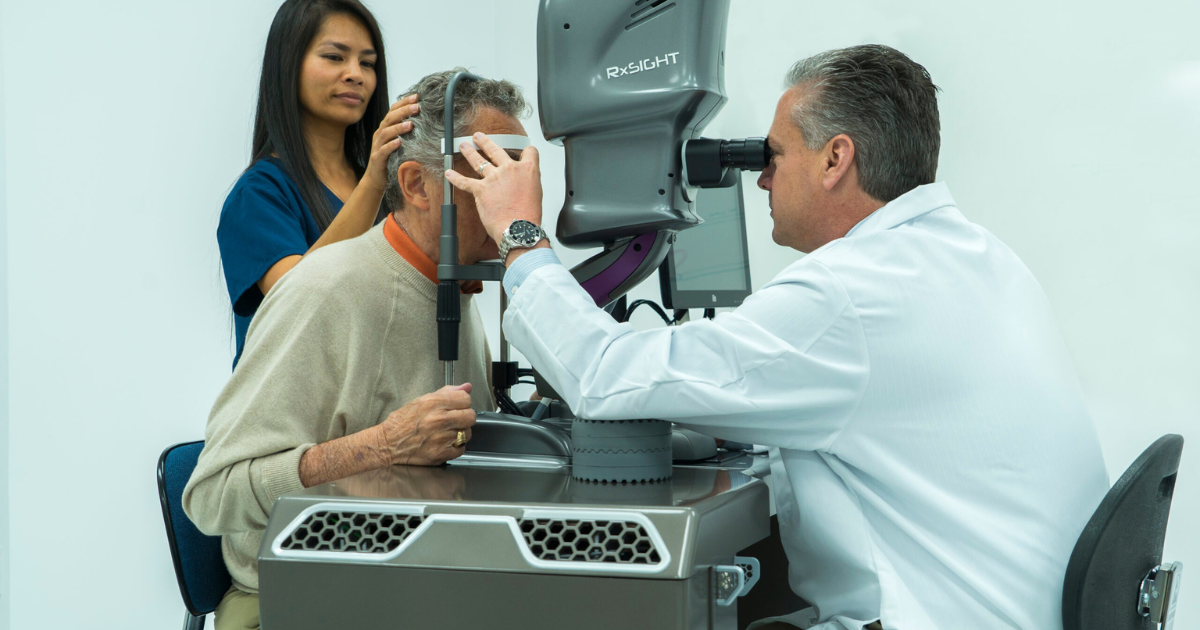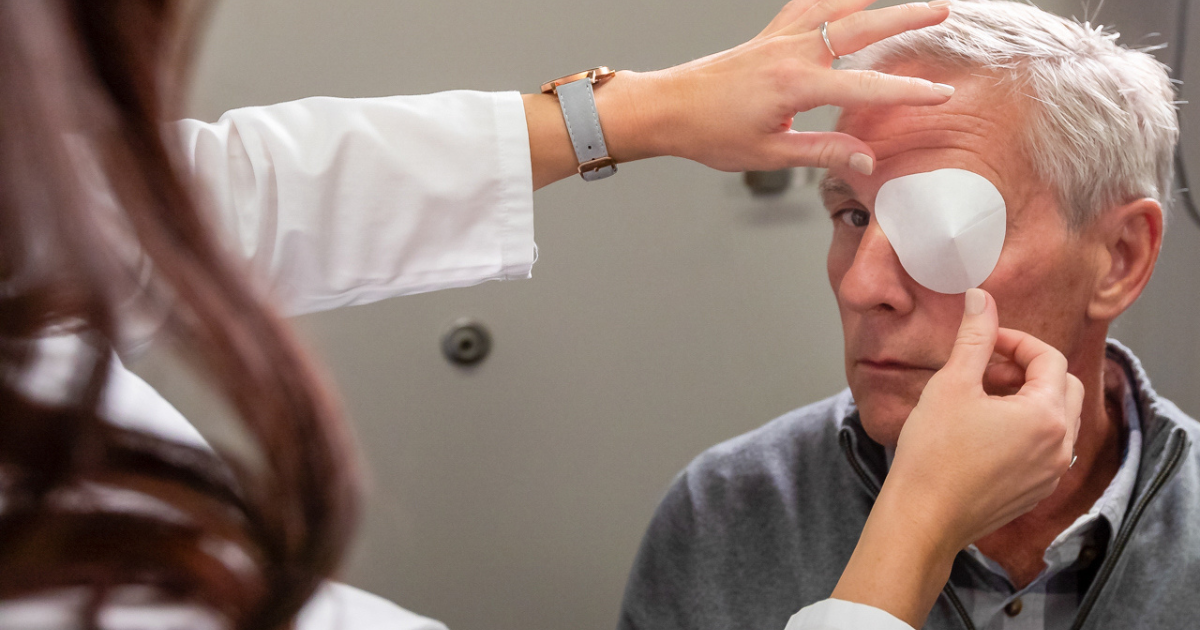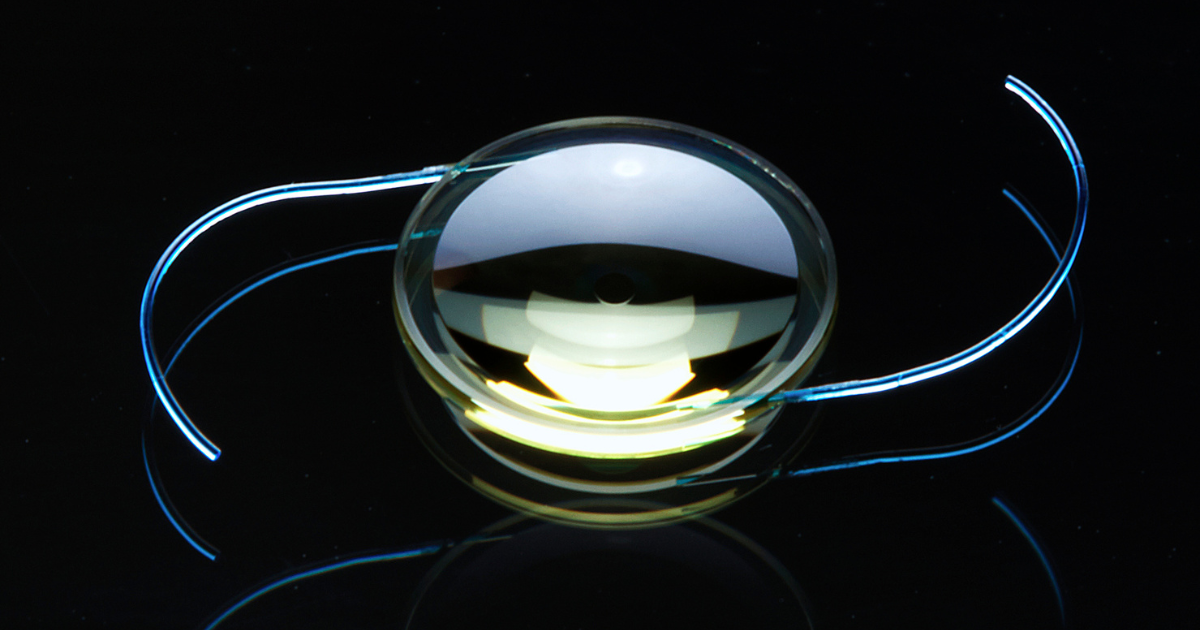Intraocular Lenses vs. Light Adjustable Lenses: Choosing the Best Lens for Cataract Surgery
March 27, 2025
Choosing the right lens for cataract surgery can be life-changing. Fixed Intraocular Lenses (IOLs) and Light Adjustable Lenses (LALs) are the main options available. But which one is right for you?
Here is a closer look at the differences between the two so you can make an informed decision about the lens that best fits your vision goals.
Understanding Traditional Fixed Intraocular Lenses

IOLs are small, artificial lenses that replace your eye’s natural lens during cataract surgery.
When the cloudy lens is removed, an IOL is placed to restore clarity and focus. You may also experience improvement in both distance and near vision.
IOLs are crafted from materials (like silicone or acrylic) and come in various types that address specific vision needs. The most common varieties include monofocal lenses (which focus at a single distance) and multifocal or extended-depth-of-focus lenses (which provide a range of vision for both near and far sight).
Each type offers a different approach to restoring vision, but IOLs have one fixed power set during cataract surgery. This lack of adjustability means that traditional IOLs may still leave some patients reliant on glasses or contacts for specific tasks.
For more on IOLs, read All About Intraocular Lens Implants.
Introducing Light Adjustable Lenses – A Breakthrough in Vision Care
Unlike traditional lenses, LALs allow you to customize your vision after cataract surgery so you can experience life with a clarity tailored just for you.
LALs are made from a unique, photosensitive material that can be fine-tuned once they are in your eyes. This approach allows you to “try out” your vision in the real world and make adjustments based on your needs.
Whether for reading, driving, or other activities requiring clear distance or near vision, LALs offer a new level of personalization that traditional lenses simply cannot match.
For more about how LALs work, read How LALs Work to Personalize Vision After Cataract Surgery.
Differences Between Intraocular Lenses and Light Adjustable Lenses
When comparing traditional IOLs to LALs, the differences lie in customization and technological advancement.
Customization and Adjustability
One of the biggest distinctions between IOLs and LALs is flexibility.
- Traditional IOLs are set with a fixed prescription during surgery. This means your vision outcome is largely determined right then and there. Adjustments require additional procedures, glasses or contacts.
- LALs offer an adjustable approach, letting your eye care team fine-tune the lens post-surgery. This non-surgical customization means that LALs provide a vision correction solution that is adapted to your lifestyle.
Precision and Accuracy
Traditional IOLs can deliver excellent results, but LALs allow ongoing refinement to reach your ideal vision even after cataract surgery.
- For example, as you try out different activities – whether driving at night or reading small text – you may encounter specific needs for fine-tuning.
- Each UV light session with LALs lets you optimize the lens for clarity. You can tailor it to those activities to provide more precise outcomes than fixed lenses can offer.
Technology and Functionality
The technology behind LALs is a leap forward compared to traditional IOLs.
- Traditional lenses are made from materials that serve one purpose: to replace the clouded natural lens and provide clearer vision.
- LALs incorporate a unique photosensitive material that responds to UV light. This is what allows for multiple adjustments until your vision is exactly where you want it to be.
Pros and Cons of Intraocular Lenses vs. Light Adjustable Lenses

Consider what each option offers when choosing between traditional IOLs and Light Adjustable Lenses.
Advantages and Disadvantages of Intraocular Lenses
Traditional IOLs are effective for many, yet they lack the flexibility of post-surgery adjustments.
Pros:
- Traditional IOLs are a tried-and-true solution in cataract surgery. With decades of use, they have proven effective and safe.
- They come in various types allowing you to choose a lens that best fits your vision goals.
Cons:
- Once the lens is placed, its prescription is set, so there is no flexibility to fine-tune the vision correction.
- You may still need glasses or contacts for specific tasks if your vision is not clear enough (like reading or driving).
Advantages and Disadvantages of Light Adjustable Lenses
While LALs allow for customized vision and offer better long-term outcomes, the process involves more follow-up visits and UV-blocking precautions.
Pros:
- LALs offer a personalized approach, letting you achieve fine-tuned clarity through post-cataract surgery adjustments.
- These lenses adapt to individual needs to provide a level of precision that traditional IOLs cannot match.
- LALs offer the flexibility to improve and customize vision if you want clearer long-term vision outcomes.
Cons:
- LALs do require more commitment after surgery. You will need to attend several follow-up visits to undergo UV light adjustments, which can extend the recovery period.
- LALs require you to wear UV-blocking glasses after surgery and between adjustment sessions to prevent unintended exposure that could affect the lens.
Read Who is a Good Candidate for a Light Adjustable Lens to understand if LALs are right for you.
The Cost of Traditional IOLs vs. Light Adjustable Lenses
When comparing LALs and Intraocular Lenses, cost is an important factor.
Traditional IOLs are typically the more affordable option, and they are often covered by insurance as part of a standard cataract surgery.
Light-adjustable lenses generally come at a higher cost due to their advanced technology and added customization. The price includes the initial lens placement and a series of follow-up UV adjustments. For those seeking the most precise, tailored vision outcomes, the flexibility of LALs can make this investment worthwhile.
Prices can vary, so it is important to discuss financing options and specific costs with your eye care team to get a clearer estimate.
Making the Right Choice for Your Vision

Deciding between traditional IOLs and Light Adjustable Lenses comes down to your vision goals. Heart of Texas Eye Care offers guidance and expertise to help you choose the best option that fits your needs.
To learn more and explore which lens is right for you, schedule a consultation or call us at (512) 213-2220 today. We serve patients in Dripping Springs, Austin, Kyle, Bee Cave, Marble Falls, and other surrounding areas.
Your path to customized vision starts here.


